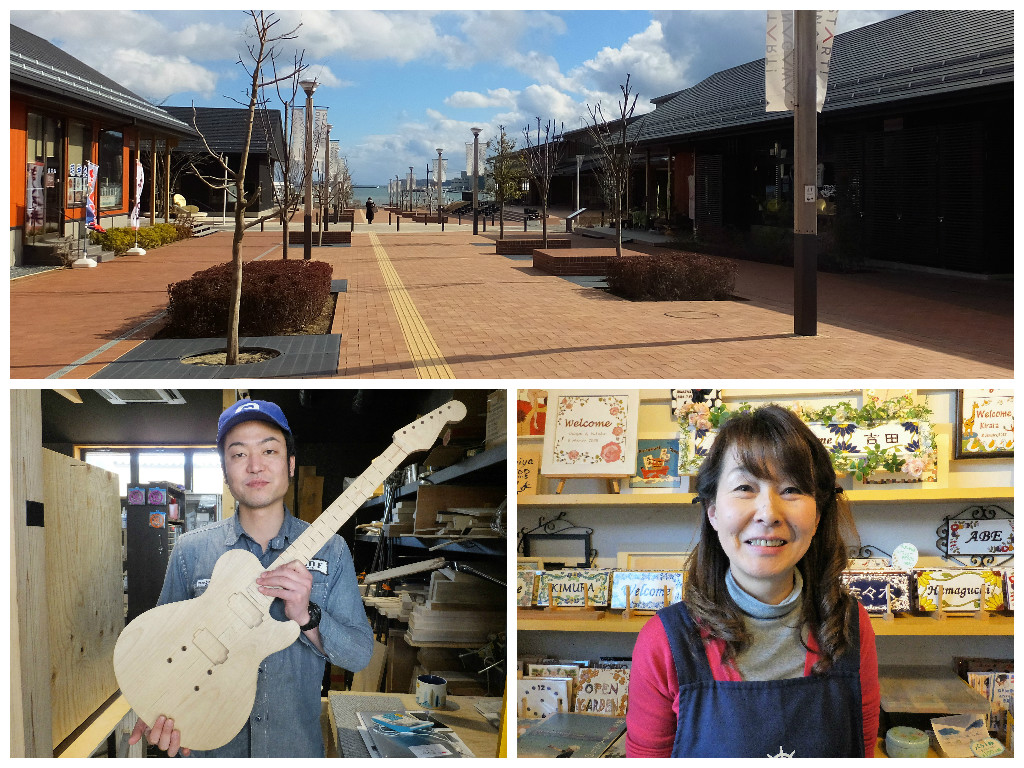実施日 : 2017年03月06日(月) - 07日(火)
Notice: Fukushima / Miyagi Press Tour, 6 Years After the Disaster
投稿日 : 2017年02月20日
- Food, tourism, and renewable energy: Fukushima’s challenge
- Passing on the lessons of the disaster: Disaster-prevention tourism in Minamisanriku
- Aiming for sustainable development amidst population decline: Rebuilding Onagawa
This year marks the sixth year since the Great East Japan Earthquake.
Ever since the disaster, recovery efforts have been continuing without rest in all the areas affected.
- Food, tourism, and renewable energy: Fukushima’s challenge
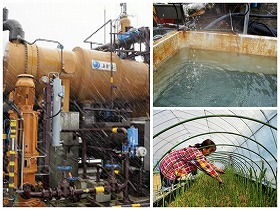 Fukushima prefecture was heavily affected by the nuclear accident. In order to ensure food safety, ever since the accident all agricultural, forestry, and marine products from Fukushima intended for sale (493 categories) have been subject to radiation monitoring tests. Some producers who evacuated to Fukushima City from Iitate have started working in agriculture again in this new location. With the number of tourists halved since the nuclear accident, a hot springs resort is endeavoring to bring back customers using renewable energy as a selling point, generating energy using hot spring heat and farming fish using heated waste water.
Fukushima prefecture was heavily affected by the nuclear accident. In order to ensure food safety, ever since the accident all agricultural, forestry, and marine products from Fukushima intended for sale (493 categories) have been subject to radiation monitoring tests. Some producers who evacuated to Fukushima City from Iitate have started working in agriculture again in this new location. With the number of tourists halved since the nuclear accident, a hot springs resort is endeavoring to bring back customers using renewable energy as a selling point, generating energy using hot spring heat and farming fish using heated waste water.
- Passing on the lessons of the disaster: Disaster-prevention tourism in Minamisanriku
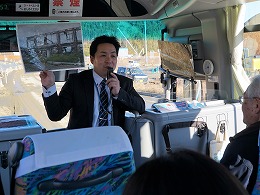 Minamisanriku, Miyagi was hit by a 20-meter tsunami in the disaster. Minami Sanriku Hotel Kanyo has been working on “disaster-prevention tourism” to help teach the lessons learned from the disaster. Having lasted through the tsunami, the hotel housed as many as 600 evacuees at a time, even without electricity or running water. With the hotel staff wanting to pass on the experiences of their town to the next generation, staff provide guided tours of the town while explaining what it was like at the time of the disaster. So far, around 300,000 people have participated in this tour, including students on school trips and individual guests.
Minamisanriku, Miyagi was hit by a 20-meter tsunami in the disaster. Minami Sanriku Hotel Kanyo has been working on “disaster-prevention tourism” to help teach the lessons learned from the disaster. Having lasted through the tsunami, the hotel housed as many as 600 evacuees at a time, even without electricity or running water. With the hotel staff wanting to pass on the experiences of their town to the next generation, staff provide guided tours of the town while explaining what it was like at the time of the disaster. So far, around 300,000 people have participated in this tour, including students on school trips and individual guests.
- Aiming for sustainable development amidst population decline: Rebuilding Onagawa
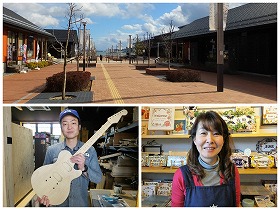 The tsunami destroyed 70% of homes in Onagawa, Miyagi. Population decline has continued since the earthquake, and the current population is 67% of what it was six years ago. The mayor, who is only in his 40s, has been looking for a way to energize the town even as the number of residents decreases, facing the issues of a declining and aging population. The town calls various people such as entrepreneurs and volunteer supporters including who are based out of town “players,” and has been actively working to accept them. In the center of the town, rebuilt from scratch, there are new stores run by a young businessman from Tokyo who plans to manufacture guitars in Onagawa with the global market as his target, and a local female entrepreneur who is working to make the town famous for tile production. Energy is beginning to return to the reborn town.
The tsunami destroyed 70% of homes in Onagawa, Miyagi. Population decline has continued since the earthquake, and the current population is 67% of what it was six years ago. The mayor, who is only in his 40s, has been looking for a way to energize the town even as the number of residents decreases, facing the issues of a declining and aging population. The town calls various people such as entrepreneurs and volunteer supporters including who are based out of town “players,” and has been actively working to accept them. In the center of the town, rebuilt from scratch, there are new stores run by a young businessman from Tokyo who plans to manufacture guitars in Onagawa with the global market as his target, and a local female entrepreneur who is working to make the town famous for tile production. Energy is beginning to return to the reborn town.
-----------------------------------------------------------------------------------------
This press tour will cover the following topics:
◆Fukushima Prefecture
・Koriyama: Fukushima Agricultural Technology Centre
・Fukushima City: Couple who evacuated to Fukushima City from Iitate, and resumed agriculture. Tsuchiyu Onsen (see generator using hot spring heat, interview with local electricity company president)
◆Miyagi Prefecture
・Onagawa: Interview with Onagawa mayor, tour of rebuilt town center, interviews with two entrepreneurs, based out of the town, interviews with residents of post-disaster public housing
・Minamisanriku: Interview with manager of Minami Sanriku Hotel Kanyo, disaster-prevention tourism demo (guided tour around town by hotel staff)
-----------------------------------------------------------------------------------------
*This press tour is sponsored by the FPCJ.
【Tour Details】
----------------------------------------------------------------------------
I. Fukushima Prefecture
- Food, tourism, and renewable energy: Fukushima’s challenge
----------------------------------------------------------------------------
<Koriyama>
1. Checking All Agricultural, Forestry, and Marine Products from Fukushima Prefecture
- The Fukushima Agricultural Technology Centre has continued monitoring radiation levels ever since the nuclear accident
・Fukushima Agricultural Technology Centre, Agricultural Safety Promotion Department, Instruction & Certification of Organic Agricultural Products Division, Vice Manager, Mr. Kenji Kusano
(Japanese)
http://www.pref.fukushima.lg.jp/w4/nougyou-centre/index.htm
(English)
http://www.pref.fukushima.lg.jp/w4/nougyou-centre/jouhou_kihon/english_ph.pdf
http://www.pref.fukushima.lg.jp/w4/nougyou-centre/jouhou_kihon/english_mon.pdf
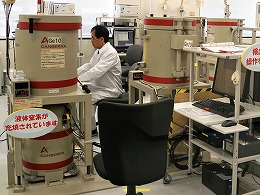 The Fukushima Agricultural Technology Centre has carried out radiation monitoring tests of all agricultural, forestry, and marine products intended for sale produced in Fukushima prefecture since the nuclear accident. For each category, they take samples from several areas with the highest contamination risk in each municipality, and use 11 germanium semiconductor detectors to check radiation levels. Numerous products are tested, 493 categories in all, including grains, vegetables, fruit, seafood, mushrooms, sansai [mountain vegetables], raw milk, meat, chicken eggs, and feed crops. Products that do not pass this test before shipping cannot be sold, so this system ensures no products with radiation above regulation levels come out of Fukushima prefecture.
The Fukushima Agricultural Technology Centre has carried out radiation monitoring tests of all agricultural, forestry, and marine products intended for sale produced in Fukushima prefecture since the nuclear accident. For each category, they take samples from several areas with the highest contamination risk in each municipality, and use 11 germanium semiconductor detectors to check radiation levels. Numerous products are tested, 493 categories in all, including grains, vegetables, fruit, seafood, mushrooms, sansai [mountain vegetables], raw milk, meat, chicken eggs, and feed crops. Products that do not pass this test before shipping cannot be sold, so this system ensures no products with radiation above regulation levels come out of Fukushima prefecture.
◆An explanation will be given of the testing system for Fukushima agricultural, forestry, and marine products that has been carried out since the nuclear accident, the regulation levels for radiation, and the changes in radiation levels being detected since the nuclear accident. There will also be an opportunity to see a sample being prepared for testing, and to see a test using the germanium semiconductor detector, from a separate room*.
*Be aware that filming and photographing inside the test room and preparation room will be done with pool coverage by a few representatives.
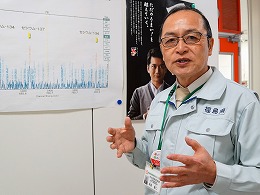
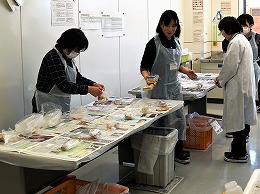
<Fukushima City>
2. Couple Who Resumed Farming After Evacuating to Fukushima City from Iitate
- Continuing to grow vegetables even away from home
・Ms. Keiko (54) and Mr. Yoshiyuki (56) Shigihara
http://www.maff.go.jp/tohoku/nouson/houkiti/pdf/15-iitatemura_1.pdf
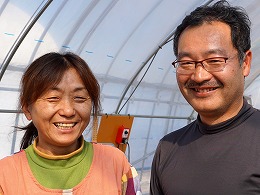 The Shigiharas are from the Nagadoro district of Iitate, which was declared a “zone difficult for residents to return to” due to the high level of radiation from the nuclear accident. After the accident, they spent time evacuated to Aizu and Fukushima City, before settling in Fukushima City. The Shigiharas began farming asparagus in Iitate in 2009, but it takes a few years before asparagus can be harvested. The nuclear accident occurred during the third year, right before they would have been able to perform the first harvest. Forced to evacuate from Iitate without harvesting the asparagus they had put their heart and soul into making, they decided they wanted to try farming again. With support from the Iitate Village Office, they found new farmland in Fukushima City, where they had evacuated to, and in 2014 rented the land and began preparing it. Mr. Shigihara said, “We had to start by getting rid of all the weeds growing there. Even though it is still Fukushima, the weather is different from Iitate, and there is still a lot we don’t know about farming this new land, so we are figuring things out as we go.” They built two vinyl greenhouses with government subsidies, but became independent in 2016 and began operating as a farm, building more greenhouses.
The Shigiharas are from the Nagadoro district of Iitate, which was declared a “zone difficult for residents to return to” due to the high level of radiation from the nuclear accident. After the accident, they spent time evacuated to Aizu and Fukushima City, before settling in Fukushima City. The Shigiharas began farming asparagus in Iitate in 2009, but it takes a few years before asparagus can be harvested. The nuclear accident occurred during the third year, right before they would have been able to perform the first harvest. Forced to evacuate from Iitate without harvesting the asparagus they had put their heart and soul into making, they decided they wanted to try farming again. With support from the Iitate Village Office, they found new farmland in Fukushima City, where they had evacuated to, and in 2014 rented the land and began preparing it. Mr. Shigihara said, “We had to start by getting rid of all the weeds growing there. Even though it is still Fukushima, the weather is different from Iitate, and there is still a lot we don’t know about farming this new land, so we are figuring things out as we go.” They built two vinyl greenhouses with government subsidies, but became independent in 2016 and began operating as a farm, building more greenhouses.
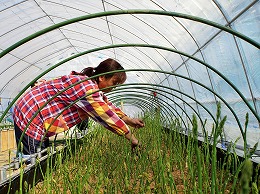 They harvested asparagus for the first time this year, and are selling it through a farm-direct shop run by the agricultural cooperative. The agricultural cooperative performs radiation tests for each category by each producer for all agricultural products made in Fukushima. Only after passing these tests at the beginning of the season, the products can be shipped. The Shigiharas’ asparagus passed that testing before being released to the market. According to Mr. Shigihara, “Fukushima’s reputation is still damaged, but nowhere else carries out such strict, detailed testing for each product type. I think Fukushima actually has the safest produce in Japan.”
They harvested asparagus for the first time this year, and are selling it through a farm-direct shop run by the agricultural cooperative. The agricultural cooperative performs radiation tests for each category by each producer for all agricultural products made in Fukushima. Only after passing these tests at the beginning of the season, the products can be shipped. The Shigiharas’ asparagus passed that testing before being released to the market. According to Mr. Shigihara, “Fukushima’s reputation is still damaged, but nowhere else carries out such strict, detailed testing for each product type. I think Fukushima actually has the safest produce in Japan.”
◆The tour will visit the Shigiharas’ greenhouses, and speak with them about how they went about starting farming again, and their feelings towards agriculture.
(Mr. Makoto Sugioka, Director of Agricultural Administration in the Recovery Section of the Iitate Village Office, will also be on hand to explain the support provided by the village government.)

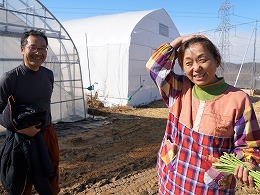
3. Tsuchiyu Onsen Dealing with Decreased Tourism After the Nuclear Accident
- Providing power for the town generated using hot spring heat. Making renewable energy into a new strength of the town.
・Tsuchiyu Onsen Town Recovery Council, Chairman/Genki Up Tsuchiyu (local power company), President, Mr. Katuichi Kato, and Mr. Takuma Oguri
http://www.genkiuptcy.jp/concept.html
Tsuchiyu Onsen, located in Bandai-Asahi National Park, is known for its abundant nature and the properties of its hot spring. It is also one of the few hot springs in Japan that has been designated as a National People's Recreation Spa.
Before the disaster (FY 2010), there were around 260,000 visitors a year. But with damage to buildings including the hot springs facilities due to the earthquake, and the nuclear accident damaging the area’s image, the number of tourists in FY 2011 after the disaster dropped to around 110,000. Of the 16 hot spring ryokan (Japanese inns) in the area, 5 shut down, and it is said to be the hot springs resort that was most affected by the nuclear accident.
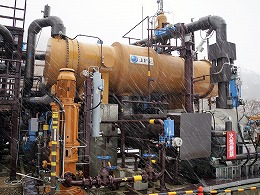 Worried that the town would vanish at the rate it was going, locals banded together to form the Tsuchiyu Onsen Town Recovery Council. Their goal is to take advantage of local resources to help the town recover. Mr. Kato, chairman of the council, stated, “Being heavily affected by the nuclear accident made me do a 180 on my ideas towards energy. By using the hot springs and rivers to generate electricity, I would like to use renewable energy to create a hot springs town that doesn’t have blackouts.” After gathering funds locally, in 2012 he established the local power company Genki Up Tsuchiyu. In 2015, they started binary generation using hot springs heat, as well as micro hydroelectric generation using the local dams meant to prevent landslides. Their generation capacity (maximum) is enough to cover the 250 households in Tsuchiyu Onsen, as well as the 11 ryokan (Japanese inns). They have also begun experimenting with farming fish using the large quantities of heated waste water left over after generating power. Many observers have come to see this unique method to stimulate the community, with 3,000 coming last year. This project using renewable energy has made the town more appealing, and contributed to drawing in guests.
Worried that the town would vanish at the rate it was going, locals banded together to form the Tsuchiyu Onsen Town Recovery Council. Their goal is to take advantage of local resources to help the town recover. Mr. Kato, chairman of the council, stated, “Being heavily affected by the nuclear accident made me do a 180 on my ideas towards energy. By using the hot springs and rivers to generate electricity, I would like to use renewable energy to create a hot springs town that doesn’t have blackouts.” After gathering funds locally, in 2012 he established the local power company Genki Up Tsuchiyu. In 2015, they started binary generation using hot springs heat, as well as micro hydroelectric generation using the local dams meant to prevent landslides. Their generation capacity (maximum) is enough to cover the 250 households in Tsuchiyu Onsen, as well as the 11 ryokan (Japanese inns). They have also begun experimenting with farming fish using the large quantities of heated waste water left over after generating power. Many observers have come to see this unique method to stimulate the community, with 3,000 coming last year. This project using renewable energy has made the town more appealing, and contributed to drawing in guests.
◆ Mr. Katsuichi Kato, Tsuchiyu Onsen Town Recovery Council Chairman and Genki Up Tsuchiyu President, will explain this renewable energy project that the recovery of the town relies upon. The tour will visit a power generation facility using hot springs heat, and the experimental fish farm using heated waste water. Then there will be an opportunity to walk down the main hot springs street, filming and photographing a hot spring facility.
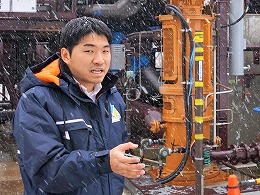
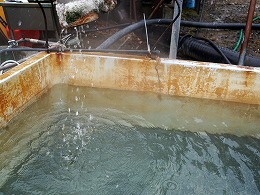
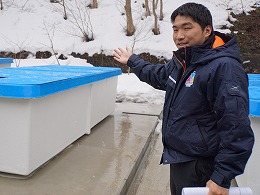
----------------------------------------------------------------------------
Ⅱ. Miyagi Prefecture
- Aiming for sustainable development amidst population decline: Rebuilding Onagawa
- Passing on the lessons of the disaster: Disaster-prevention tourism in Minamisanriku
----------------------------------------------------------------------------
<Onagawa>
4. Interview with Onagawa Mayor, Mr. Yoshiaki Suda (44)
- Dealing with declining population and aiming for sustainable development by bringing in “players” from outside
http://www.town.onagawa.miyagi.jp/02_01_02.html
http://www.town.onagawa.miyagi.jp/gyouseikujinkou.files/sheet000.html
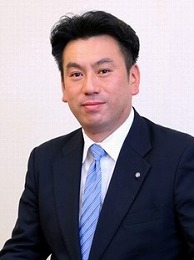 Onagawa was hit by a 20-meter tsunami in the disaster. Around 70% of homes in the town were destroyed, and 827 residents (8% of the population) died or went missing. The population before the disaster (as of March 2011) was 10,014, but it has continued to decline since the disaster and is now only 6,705 (as of January 2017). With 37% of the population 65 years old or older, the town is also aging.
Onagawa was hit by a 20-meter tsunami in the disaster. Around 70% of homes in the town were destroyed, and 827 residents (8% of the population) died or went missing. The population before the disaster (as of March 2011) was 10,014, but it has continued to decline since the disaster and is now only 6,705 (as of January 2017). With 37% of the population 65 years old or older, the town is also aging.
Mr. Suda (44) became mayor of the town in November 2011 after the disaster, and has been working on sustainable development for the town even as the number of residents decreases, facing the issues of a declining and aging population. The town calls various people such as entrepreneurs and volunteer supporters “players,” and has been actively working to accept them. Instead of focusing on having people relocate to the town, the plan is to have people from outside Onagawa consider it their second or third hometown, become involved in it in various ways, and continue to visit the town. Speaking about these supporters, Mr. Chiba of the Onagawa Town Hall said, “I can think of hundreds off the top of my head. It is important to rely on help from the outside to cover what we are missing when it comes to rebuilding the town from zero.” Through community building efforts as part of the recovery, the mayor would like to increase this “active population” and maintain the town’s vitality. With population decline becoming a serious issue throughout Japan, not just areas affected by disaster, all eyes are on Onagawa’s new approach.
◆The tour will interview the mayor of Onagawa and hear about the state of recovery and his thoughts on regional towns in a time of population decline.
5. Rebuilding a New Town Center in Onagawa
- Six years have passed since starting from zero: life has returned to the town
・Onagawa Municipal Government General Affairs Section, Secretary and PR Team Chief, Mr. Yasuhiro Chiba
http://www.town.onagawa.miyagi.jp/hukkou/nigiwai_map.html
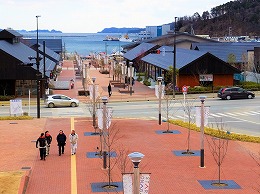 Onagawa has been called a “front-runner of the recovery.” The center of town, which was destroyed by the tsunami, was elevated by eight meters using soil to become new, empty land. In March 2015, the JR Onagawa Station was rebuilt 200 meters further inland than its previous location. The station has been consolidated with the municipal hot springs facility Onagawa Onsen Yupoppo, and was designed by architect Shigeru Ban. In December that same year, the tenant commercial facility Sea Pearl Pier Onagawa opened in front of the station. It is home to businesses including stylish cafés and restaurants, a store selling soap made from natural ingredients run by a former translator from Tokyo, and a store selling accessories made by local women using kimono fabric. The Damborghini, a scale model of a Lamborghini sports car made entirely out of cardboard created by a cardboard company located in Miyagi, is also displayed there (danboru is Japanese for cardboard). Recently, the area has become busy enough that there have been lineups at the restaurants on weekends.
Onagawa has been called a “front-runner of the recovery.” The center of town, which was destroyed by the tsunami, was elevated by eight meters using soil to become new, empty land. In March 2015, the JR Onagawa Station was rebuilt 200 meters further inland than its previous location. The station has been consolidated with the municipal hot springs facility Onagawa Onsen Yupoppo, and was designed by architect Shigeru Ban. In December that same year, the tenant commercial facility Sea Pearl Pier Onagawa opened in front of the station. It is home to businesses including stylish cafés and restaurants, a store selling soap made from natural ingredients run by a former translator from Tokyo, and a store selling accessories made by local women using kimono fabric. The Damborghini, a scale model of a Lamborghini sports car made entirely out of cardboard created by a cardboard company located in Miyagi, is also displayed there (danboru is Japanese for cardboard). Recently, the area has become busy enough that there have been lineups at the restaurants on weekends.
◆A town official will describe how they have been rebuilding the town from zero, while guiding the tour from JR Onagawa Station to the tenant shopping street Sea Pearl Pier Onagawa, which has become the new commercial center for the area.
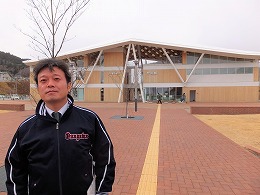
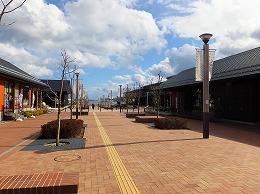

6. Players Supporting the Recovery
- Entrepreneurs gathering in the new tenant shopping street Sea Pearl Pier Onagawa
(1) Developing a guitar using traditional Japanese wood joining techniques: Working towards exporting guitars made in Onagawa
・Sessionable Co. (guitar manufacturing and sales), President, Mr. Yosuke Kajiya (33) 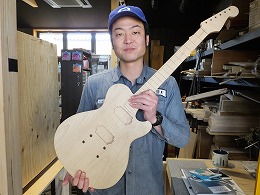
http://glide-guitar.jp/user_data/concept.php
Mr. Kajiya worked in sales at a musical instrument store in Tokyo before starting Sessionable in 2014 to manufacture and sell guitars. As president, he says, “When I was thinking about where to locate the manufacturing hub, I had the opportunity to visit Onagawa. The town had an excellent atmosphere, so I decided on Onagawa.” In February 2016, the workshop opened in Onagawa’s new town center, and production of guitars began.
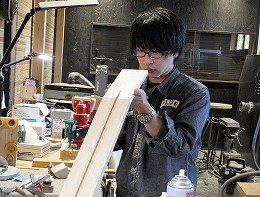 The guitars made here are unique. Instead of the neck being connected to the body of the guitar with bolts as is normal, traditional carpentry techniques from the Sanriku coast are used to connect them with wood joinery without using nails. This provides the guitars with a unique, clear sound. Currently, three young artisans who have come from around Japan are building guitars in Onagawa, preparing for the first shipment in March 2017. The company is interested in exporting these “Made in Onagawa” guitars overseas to the U.S. and Southeast Asia.
The guitars made here are unique. Instead of the neck being connected to the body of the guitar with bolts as is normal, traditional carpentry techniques from the Sanriku coast are used to connect them with wood joinery without using nails. This provides the guitars with a unique, clear sound. Currently, three young artisans who have come from around Japan are building guitars in Onagawa, preparing for the first shipment in March 2017. The company is interested in exporting these “Made in Onagawa” guitars overseas to the U.S. and Southeast Asia.
◆The tour will visit the workshop and see how the guitars are made, and interview Mr. Kajiya.
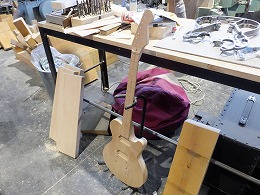
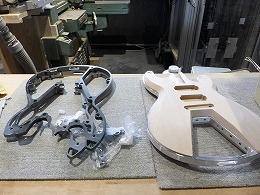
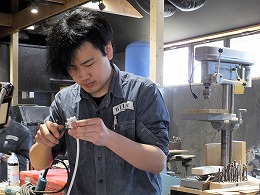
(2) Making Tiles New Specialty of the Town
・NPO Minato-machi Ceramika Kobo (Spanish tile manufacturing and sales), President, Ms. Narumi Abe (56)
http://www.ceramika-onagawa.com/ 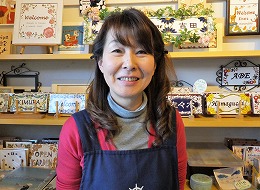
Minato-machi Ceramika Kobo is a tile company that was established in 2015 by a group of six women including Ms. Narumi Abe, born and raised in Onagawa. Originally a group with pottery as a shared hobby, all of them were affected by the disaster, and one group member passed away. Having lost their homes and spent months in evacuation shelters, followed by living in temporary housing, Ms. Abe decided she wanted to create something with her own hands. That is when she encountered Spanish tiles, which are colorful and decorative. The members gathered and started the company, with the goal of “Decorating the rebuilt town with Spanish tiles that pass on nostalgic views of Onagawa that were lost in the tsunami, and our hopes for the future.” The tiles made by Ms. Abe and the others can be seen around the town, such as the 101 picture tiles that decorate the entrance to the first municipal post-disaster public housing completed in Onagawa in March 2014 (Sports Park Residence, see next topic). Having heard the reputation of these tiles, which have become a new specialty of Onagawa, some customers from outside the prefecture have also placed orders for tile signs and the like.
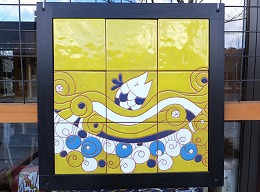 Originally the project ran using government subsidies, but in April 2015 it went independent, and business has been stable. The original six members has now grown to ten. In addition to designing and manufacturing, they also provide workshops on tilemaking for visitors to Onagawa, with the option of adding those tiles to a wall in the center of town. According to Ms. Abe, “If a tile you made yourself is displayed in Onagawa, this creates a connection with the town. I would like those people to visit Onagawa again.”
Originally the project ran using government subsidies, but in April 2015 it went independent, and business has been stable. The original six members has now grown to ten. In addition to designing and manufacturing, they also provide workshops on tilemaking for visitors to Onagawa, with the option of adding those tiles to a wall in the center of town. According to Ms. Abe, “If a tile you made yourself is displayed in Onagawa, this creates a connection with the town. I would like those people to visit Onagawa again.”
◆The tour will visit the store and interview Ms. Abe.
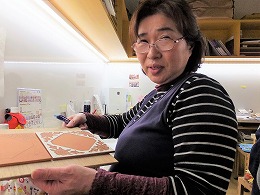

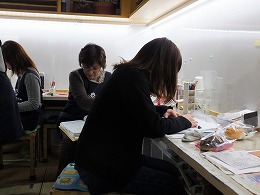
7. A New Life in Post-Disaster Public Housing
- Residents building a community from scratch
・Onagawa Municipal Sports Park Residence, Resident/Representative of Oharakita District, Mr. Hiroshi Suzuki (69)
https://www.pref.miyagi.jp/uploaded/attachment/610466.pdf
https://www.pref.miyagi.jp/uploaded/attachment/307223.pdf
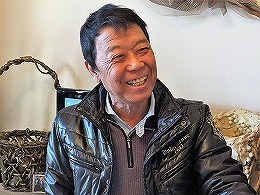 Six years since the disaster, work is progressing on “post-disaster public housing” (collective public housing for people who lost homes in the disaster) throughout Japan, and people are gradually moving from prefab temporary housing to these new buildings. In March 2014, the Sports Park Residence run by Onagawa Town was the first post-disaster public housing to be completed in Onagawa, where approximately 70% of homes in town were destroyed in the disaster. It was built on an athletics track located on high ground, where people had not previously lived, and so a new administrative district was also made. Currently, 196 households and approximately 400 people are living in the residence. Of these, 52% are 65 years old or older, with 74 households consisting only of seniors.
Six years since the disaster, work is progressing on “post-disaster public housing” (collective public housing for people who lost homes in the disaster) throughout Japan, and people are gradually moving from prefab temporary housing to these new buildings. In March 2014, the Sports Park Residence run by Onagawa Town was the first post-disaster public housing to be completed in Onagawa, where approximately 70% of homes in town were destroyed in the disaster. It was built on an athletics track located on high ground, where people had not previously lived, and so a new administrative district was also made. Currently, 196 households and approximately 400 people are living in the residence. Of these, 52% are 65 years old or older, with 74 households consisting only of seniors.
A resident and the representative of the newly established administrative district, Mr. Suzuki said, “Everyone lived in single-family houses before the disaster, and because they were not used to living in collective housing there were problems at first with issues such as garbage and smells. But everyone has slowly become used to living here.” With the high percentage of seniors, a café located within the complex run by residents plays a role in connecting the residents who have moved there from different places. Operated by resident volunteers working in shifts, 20 to 30 people visit the café every day. Residents will gather and chat while drinking tea, and it also serves as a place to share information about events for residents. Another function it fulfills is encouraging people to look out for each other, for example if a regular hasn’t come to the café recently.
◆The tour will visit the café in the complex, and interview Mr. Suzuki and other residents. There will also be a chance to see the Spanish tiles from Ceramika Kobo (see previous topic) used to decorate the entrance.
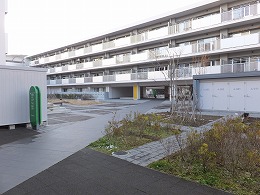
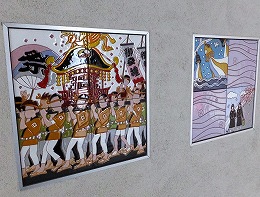
<Minamisanriku>
8. Disaster-Prevention Tourism: Passing on the Lessons of the Disaster
- Over 300,000 people have taken a tour operated by a hotel that took in 600 evacuees
・Minami Sanriku Hotel Kanyo, Manager, Ms. Noriko Abe
http://www.mkanyo.jp/%E8%AA%9E%E3%82%8A%E9%83%A8%E3%83%90%E3%82%B9/
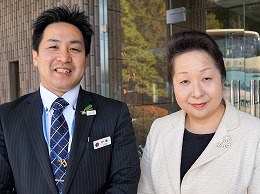 There are several examples of areas affected by the Great East Japan Earthquake where the local tourist industry or local government has carried out “disaster-prevention tourism” to pass on the experiences and lessons of the disaster, playing a major role in recovering from the decline in the number of tourists and school trips visiting after the disaster.
There are several examples of areas affected by the Great East Japan Earthquake where the local tourist industry or local government has carried out “disaster-prevention tourism” to pass on the experiences and lessons of the disaster, playing a major role in recovering from the decline in the number of tourists and school trips visiting after the disaster.
A prime example is the Minami Sanriku Hotel Kanyo, located in Minamisanriku, Miyagi, which was severely damaged by the tsunami. Although partially flooded, the hotel survived the disaster thanks to being built on top of bedrock, and many people evacuated there soon after the disaster. Thinking “we can’t just ignore people in trouble right in front of us,” the hotel welcomed local residents even though it had no power or running water, and 350 people had already evacuated there on the day the earthquake occurred. Two months after the disaster, it was designated as a secondary evacuation site by the government, and accepted 600 evacuees. The water was stopped for four months, and the power for one month, but food, clothing and shelter was provided to support the evacuees, using rainwater and river water as necessary.
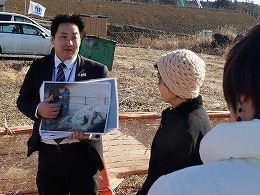 Later, in response to requests from guests the hotel began providing tours of the town with staff who had been in the disaster talking about their experiences. School trips and company training groups often go on this tour, with approximately 7000 people taking it per year. Since February 2012, the hotel has also provided a “storyteller bus tour” that individual travelers can participate in. Held every morning, at its peak 300 people took the tour in one day. Combined, approximately 300,000 people have gone on group tours or the storyteller bus tour. Participants have commented, “It is different from what I saw on TV. When seeing with my own eyes, I could understand what it was really like when water pushed in all the way to a 20-meter-tall hill.”
Later, in response to requests from guests the hotel began providing tours of the town with staff who had been in the disaster talking about their experiences. School trips and company training groups often go on this tour, with approximately 7000 people taking it per year. Since February 2012, the hotel has also provided a “storyteller bus tour” that individual travelers can participate in. Held every morning, at its peak 300 people took the tour in one day. Combined, approximately 300,000 people have gone on group tours or the storyteller bus tour. Participants have commented, “It is different from what I saw on TV. When seeing with my own eyes, I could understand what it was really like when water pushed in all the way to a 20-meter-tall hill.”

The debris of ruined buildings has been removed, and new land built up, so the town’s appearance continues to change. Hotel manager Ms. Noriko Abe said, “People that come to this town for the first time have a more difficult time understanding what happened. If they don’t listen to the stories, they will pass by without being affected. That is why I want to pass on the experiences of this town to the next generation, and have people who visited go home with a new understanding.”
◆The tour will go around the town on a disaster-prevention tour guided by hotel staff. Hotel manager Ms. Abe will also explain why they continue to hold these disaster-prevention tours, six years after the disaster.
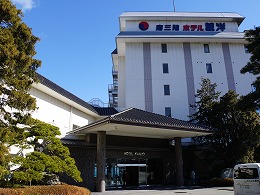

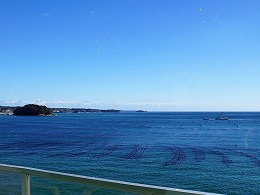
【Tour Itinerary】
1. Tour Dates: Monday, March 6 to Tuesday, March 7, 2017 (2 days, 1 night)
<Day 1 Monday, March 6: Koriyama, Fukushima>
7:12-8:33(1h21) Tokyo- Koriyama (Shinkansen)
8:40-9:00(20) Koriyama to Fukushima Agricultural Technology Centre
9:00-10:30(1h30) Fukushima Agricultural Technology Centre
・Briefing
・See a sample being prepared for testing
10:30-11:15(45) Bus
11:15-12:30(1h15) The Shigihara Who Resumed Farming After Evacuating to Fukushima City from Iitate
12:15-12:45(30) Bus / Lunch
13:00-13:45(45) Tsuchiyu Onsen / Genki Up Tsuchiyu
13:45-14:00(15) Bus
14:00-14:45(45) Power generation facility using hot springs heat, and
the experimental fish farm using heated waste water
14:45-15:00(15) Bus
15:00-16:00(60) Tsuchiyu Onsen( Film and photograph)
16:00-18:45(2h45) Bus
19:15-20:15(1h15) Dinner
20:15-20:50(35) Minami Sanriku Hotel Kanyo, Interview to Manager, Ms. Noriko Abe
<Day 2 Tuesday, March 7: Minamisanriku, Onagawa>
8:00-9:20(1h20) Disaster-prevention tour demo
9:40-10:50(1h10) Bus : Minamisanriku to Onagawa
11:00-12:15(1h15) Briefing on Onagawa,
Walking from JR Onagawa Station, Onagawa Onsen Yupoppo , to Sea Pearl Pier
12:15-13:00(45) Lunch at Sea Pearl Pier Onagawa
13:00-14:00(1h) Sea Pearl Pier Onagawa: Sessionable Co.(Guitar manufacturing and sales)
14:00-14:45(45) Sea Pearl Pier Onagawa: NPO Minato-machi Ceramika Kobo (Tile making)
15:00-16:00(1h) Post-disaster public housing
16:20-17:20(1h) Interview with the mayor Suda
17:30-19:00(1h30) Bus : Onagawa to Sendai
19:30-21:04(1h34) Sendai to Tokyo (Shinkansen)
2. Qualification: Bearer of Gaimusho Press Registration Card
3. Cost: 13,000 yen per person including transportation accommodation meal and interpreter fee (FPCJ will later inform the participants of methods for payment, cancellation fee, etc.)
4. Participants: Limited to 10 applicants.
(Only one reporter and one photographer from each company, but two participants from each TV team will be acceptable.)
*If the number of applicants exceeds 10, an upper limit may be set on the number of participants from each country/region.
5. FPCJ Contact: Ms. Chika Yoshida (Tel: 03-3501-3405)
6. Remarks:
(1) There may be some restrictions on photographing and filming at the tour sites. Please follow the instructions of the officials on duty.
(2) FPCJ will not be liable for any inconvenience, trouble or accidents that might occur during the tour.
(3) This press tour will require participants to bear part of the cost, but is not a profit-making venture.

